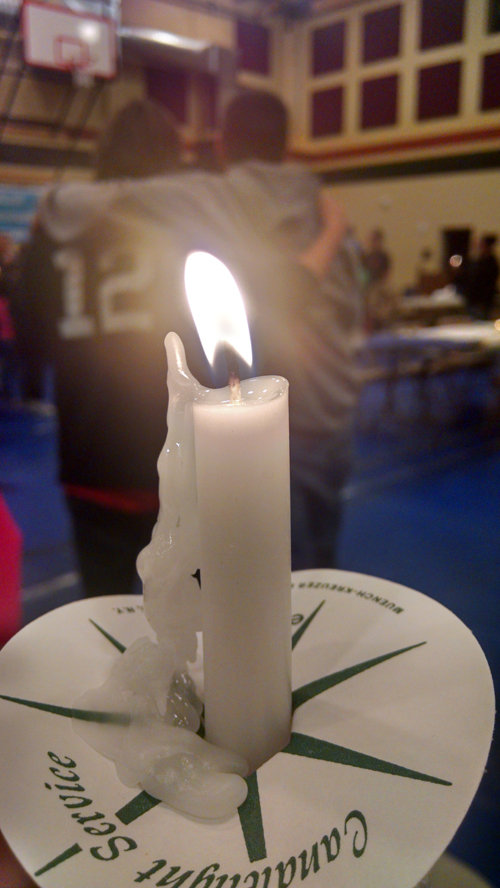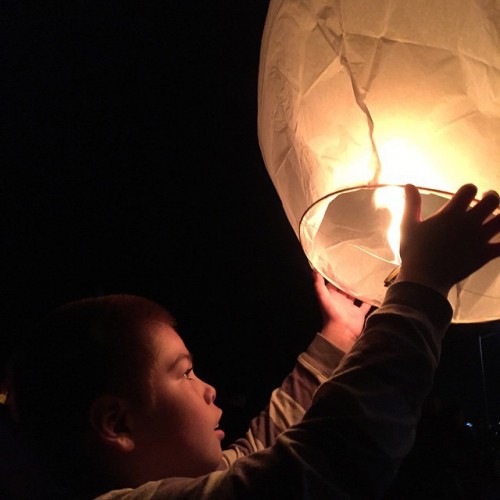Month: November 2014
November 19, 2014 Tulalip See-Yaht-Sub
Click the highlighted link below to download the November 12, 2014 Tulalip See-Yaht-Sub
Click here to download Nov. 19, 2014 SYS
BIA’s Funding Maze Hampers Tribal Self- Governance
A funding system that routes money through a bureaucratic maze with more than a dozen checkpoints before it arrives at its destination – tribal governments – is one of the obstacles Indian country faces in its quest for self-governance, the head of the Bureau of Indian Affairs said at the National Congress of American Indians annual meeting.
“Rube Goldberghimself couldn’t have come out with a more complicated system!” Assistant Secretary – Indian Affairs Kevin K. Washburn said, showing the amused audience a mind-boggling, arrow-marked illustration of how the funds flow. Washburn spoke to a full crowd packed into the General Assembly hall at the Hyatt Regency in Atlanta where the NCAI held its 71stannual Convention & Marketplace October 26-31.

The theme of this year’s NCAImeeting was “Tribal Governance for the Next Generation.” With that theme in mind. Brian Cladoosby, NCAI president and chair of the Swinomish Indian Tribal Community, encouraged NCAI member tribes “to remember the guidance of the generations that came before us while we move forward to continue to build a strong future to the generations to come.”
Washburn was among dozens of dignitaries – tribal leaders and federal government officials, including Interior Department Secretary Sally Jewell – who spoke at the convention. The convention’s theme prompted him to review what’s been done so far under the Obama administration to advance tribal governance and what remains to be done.
“We’re coming up on the fourth quarter,” Washburn said, referring to the last two years of the Obama administration that will end in 2016. “And it hasn’t been all victories, we’ve had some setbacks.” The top setback has been the failure so far to fix the Supreme Court’s devastating ruling in Carcieri v Salazar,which has hampered efforts to take land into trust for tribes.
“But what I’d like to do in the fourth quarter is really run up the score. We have to join together and work together to do that and NCAI is our best partner in doing that because it’s our best way of getting to tribes,” Washburn said.

Among recent victories Washburn cited the Violence Against Women Act, the Tribal Law and Order Actand the HEARTH Act.
Other achievements include the vastly improved consultation policy, copy3 million in technical assistance grants to 75 different tribes to move forward with energy projects and the settlement of over 80 lawsuits in addition to the Cobell settlement and several water rights cases. A major victory is the growing masses of land the BIA has taken into trust for tribes, despite the Carcieri ruling, Washburn said. “We’re restoring thousands of acres and literally hundreds of square miles to Indian country and that’s an important foundation for tribal governments for the next generation because land … is where a tribe’s sovereignty is the strongest.”
All of these advances have resulted in a little-known consequence that also advances tribal self-governance – the BIA’s reduced workforce from around 17,000 employees in 1981 to around 7,500 employees today. So where’d they all go? “They went to Indian country jobs,” said Washburn. “These jobs are being done better by tribal governments than they were by the federal government. They’re being done in Indian country and the people doing them are accountable to tribal governments.”
But in terms of moving tribal self-governance forward for the next generation, “we’ve got a lot of challenges,” Washburn said. Many of them have to do with how programs are funded. Several laws enacted over the years to encourage and improve tribal self-governance – the 1975 Indian Self Determination and Education Assistance Act; the 1988 tribal schools act; the Self-Government Demonstration Project Act, the Indian Employment, Training and Related Services Demonstration Act of 1992and others – have different funding requirements. And then there’s the money flow chart, which came to light when Washburn started asking why it took so long to get contract support funding out to the tribes.
“So what we have to some degree is disjointed programs and a lack of coordination between agencies sometimes,” Washburn said. “We must improve this!”
Washburn took ownership of the problem – “This is all on me,” he said – and informed the NCAI assembly that he is working with Deputy Assistant Secretary for Management Tommy Thompson to fix the problem. “We have got to get the money out to tribes quickly so that tribes can use that money when it’s needed. We’re trying!” he said. The audience gave him a standing round of applause.
Read more at http://indiancountrytodaymedianetwork.com/2014/11/14/bias-funding-maze-hampers-tribal-self-governance-157840
Mask That Inspired Seahawks Logo Going on Display

The Seattle Seahawks logo is inspired by a Kwakwaka’wakw artist’s mask which will be on display at the Burke Museum in Seattle on November 22.
The Kwakwaka’wakw mask that inspired the Seattle Seahawks logo will be on display next week.
The mask, which is more than a century old, was created by an artist or artists of the Kwakwaka’wakw community and will be on display on November 22 in the Here & Now: Native Artists Inspiredexhibit at the Burke Museum in Seattle.
When the mask arrived in Seattle last month, Bruce Alfred, Namgis Band of the Kwakwaka’wakw Nations, provided information to the museum to be used in its display. “It’s very old, and a beautiful piece,” Alfred told The Seattle Times.
Alfred also said that more than one artist might have designed the transformation mask since it was used by a dancer in ceremony who made adjustments to it for fitting purposes.
RELATED: Native Seahawks Mask to Come to Seattle
On Monday, The Seattle Timesreported that the online campaign to bring the mask to the city reached its financial goal, raising more than $22,000 from at least 450 donors. Its goal was to raise copy4,575. The museum had planned to undertake the cost, but the fundraising on KickStarter.comand other donations made that unnecessary.
Kwakwaka’wakw community members, the museum and representatives from the Seattle Seahawks, including alumni players, Seattle Sea Gals, and Blue Thunder will welcome the mask a few days earlier with a ceremony and photo op on November 18, as well as sneak peak of the new exhibit. The event is not open to the public.
The mask is two-feet long and about three-feet wide when it opens; and it weighs at least 5 pounds.
Read more at http://indiancountrytodaymedianetwork.com/2014/11/13/mask-inspired-seahawks-logo-going-display-157825
Changes on Lummi Nation Council
Cheryl Kinley-Sanders is the new vice chairwoman of the Lummi Nation. She was elected to the post by her council colleagues after the swearing in of new council members on November 4.
Kinley-Sanders, elected to the council in 2013, is vice chairwoman of the American Indian Health Commission for Washington State. She is also a commissioner of Whatcom County Fire Protection District No. 8.
Rita Jefferson and Celina Phair were elected November 1 to the Lummi Indian Business Council, the governing body of the Lummi Nation. They were elected to positions A and B, succeeding Darrell Hillaire, who chose not to seek reelection, and Bernie Thomas. Tim Ballew II and Jay Julius were reelected to positions C and D.
After the oaths of office were administered, the council voted to retain Ballew as chairman, and elected Kinley-Sanders vice chairwoman and Jefferson treasurer.
Others continuing on the council: Cliff Cultee, position E; Henry Cagey, position F; Johnny Felix, position G; Julie Finkbonner, position H; Shasta Cano-Martin, position I; Cheryl Sanders, position J; and Steven Toby, position K.
The Lummi Indian Business Council is influential in the Northwest. The Lummi reservation comprises 21,000 acres– including uplands and tidelands on the Lummi Peninsula and Portage Island – but Lummi exercises cultural, environmental and political influence throughout its historical territory, which includes the San Juan Islands. The Lummi Nation has more than 5,000 citizens, 78 percent of whom live on or near the reservation boundaries.
Lummi Nation economic enterprises include Silver Reef Hotel Casino Spa, with 105 guest rooms, restaurants, and a convention and event center; Fisherman’s Cove Marina, home of the largest fishing fleet in the region; and Gateway Center, home of Gateway Café, Salish Arts Market, and Seafood Market. The Lummi Community Development Financial Institution provides opportunities for housing and business development through loan products, financial education, and business coaching.
The Lummi Nation has a Sovereignty and Treaty Protection Office, which is at the forefront of efforts to protect cultural resources and the environment; and the Lummi Natural Resources Department manages fisheries and forestry, operates finfish and shellfish hatcheries, and is exploring clean energy development.
“We’re leaders on a national and international level – climate change, GWE (General Welfare Exclusion Act), taxation and fisheries issues,” Cano-Martin said in an earlier interview.
Read more at http://indiancountrytodaymedianetwork.com/2014/11/14/changes-lummi-nation-council-157805
Klamath Basin Agreements Move Toward Senate Floor

By: Jes Burns, Earthfix
A long-negotiated series of agreements to manage water in the Klamath Basin in Southern Oregon and Northern California received Senate committee passage Thursday.
“This legislation is the result of a historic collaboration of efforts,” said Oregon Sen. Ron Wyden during the committee meeting.
Wyden was one of the four Oregon and California co-sponsors the Senate bill. It gives federal authorization for local efforts to ensure enough water for fish and wildlife, while providing predictable irrigation supplies for farmers and ranchers.
The Klamath agreements were signed by local stakeholders in 2010. They establish a hierarchy of water rights and present the possibility of removing dams owned by PacifiCorp. Congressional approval is needed to enact certain provisions.
The legislation gained broad bi-partisan approval in the Senate Energy and Natural Resources Committee. Alaska Sen. Lisa Murkowski supported the bill after the committee approved an amendment decreasing the role of the federal government in making dam-removal decisions.
“What we do… is ensure that the states of California and Oregon are empowered to decide,” Murkowski said.
Now the legislation faces the possibility of a full Senate vote in the coming weeks.
Muckleshoot Tribe purchases Emerald Downs
The Muckleshoot Indian Tribe will take full ownership of the Northwest’s premier Thoroughbred racing facility through purchase of Emerald Downs.
Tulalip News staff

In a statement released today by the Tribe, Muckleshoot will add to their list of enterprises owned by the Tribe with the purchase of Emerald Downs. An agreement between the Tribe and the Northwest Racing Associates will transfer full ownership and operational control of Emerald Downs to the Tribe. The transaction will close within 90 days.
No price was mentioned in the statement. The Tribe has owned the land under Emerald Downs since 2002, when it purchased the 157-acre property for $70 million and became the property landlord. Northwest Racing Associates has operated the racetrack since its launch in 1996, replacing the long standing Longacres Racetrack, which closed in 1992.
“The Tribe’s long-standing support of the state’s thoroughbred racing industry continues with this transaction,” said Muckleshoot Tribal Council Chair Virginia Cross in the statement about the Tribe’s purchase. “It is the Tribe’s goal to keep the thoroughbred horse racing industry as a viable part of our state’s economy. Emerald Downs sits in the center of the Tribe’s historical homeland and this transaction makes it an important part of our economic development program.”
The Tribe has invested more than $11 million in purse enhancements since 2004. The Tribe plans to conduct an evaluation of the racetrack to strengthen the performance of Emerald Downs.
Northwest Racing Associates President Ron Crockett will stay on as a consultant to the Tribe to help with the transition. Plans to keep the current management team in place are underway.
“My goal has always been to preserve this important industry,” said Crockett in the statement. “I have accomplished that goal and this is now a good time for the Tribe to step in and bring Emerald Downs to the next level.”
Emerald Downs is located in Auburn, Washington.
Activist groups sue over border pipeline
The groups said the State Department should not have approved a temporary change.

By David Shaffer, StarTribune
Tribal and environmental groups have sued the U.S. State Department for approving a temporary plan by a Canadian pipeline company to increase the flow of heavy crude oil from Alberta into Minnesota before a federal environmental study is finished.
The lawsuit, filed Tuesday in U.S. District Court in Minnesota, alleges that the State Department violated the National Environmental Policy Act and other laws in approving the temporary increase in oil flow and in not releasing information about it. The suit seeks an injunction to halt the project.
“It is a blatant attempt to avoid the ongoing State Department review process,” Doug Hayes, staff attorney for Sierra Club, one of the groups behind the lawsuit, said on a conference call Wednesday. “It is an attempt to increase tar sands imports into the United States without any public scrutiny.”
The State Department said by e-mail that its policy is not to comment on litigation.
Enbridge Energy won Minnesota regulatory approval in August to complete a $200 million upgrade of its 1,000-mile Alberta Clipper pipeline, boosting its flow by adding pumping stations. The line carries heavy crude from the Alberta oil sands region across the state, supplying refineries across the Midwest.
Part of the upgrade is already finished, but the State Department hasn’t yet approved a presidential permit for Enbridge to legally increase cross-border oil shipments. That’s the same permit needed for TransCanada’s proposed Keystone XL pipeline through Western states, on which the Obama administration has not yet acted.
In a move that angered climate and environmental activists, Calgary-based Enbridge got approval from the State Department in July to increase its cross-border oil flows on the Alberta Clipper line by shifting the crude into another, underused pipeline at the border.
The underused pipeline, known as Line 3, already has a presidential permit to operate at higher volumes. It also carries Canadian crude to Midwest refineries, but operates at a reduced flow for safety reasons. The 1960s-era Line 3 suffers from corrosion and has ruptured several times, and Enbridge has announced plans to rebuild it by 2017.
To make the cross-border switch, Enbridge recently replaced a 17.5-mile segment of Line 3 at the border — allowing it operate at high capacity — and installed valves linking it to the parallel Alberta Clipper Line. On only that border segment, the flows of the two lines are switched, strictly for legal reasons. After the crude oil enters the United States, valves send the oil back into the newer Alberta Clipper line.
The State Department decided that the switch was legal under Line 3’s existing permit.
The lawsuit was filed by Duluth-based environmental attorney Marc Fink on behalf of the White Earth Nation, Honor the Earth, Indigenous Environmental Network, Minnesota Conservation Foundation, MN350, Center for Biological Diversity, Sierra Club and National Wildlife Federation.
The suit alleges the State Department violated federal law by approving the temporary border project before completing an environmental-impact statement on the Alberta Clipper upgrade. That environmental study is underway but likely won’t be completed for a year. Keystone XL also has been held up by an environmental study.
The suit also alleges violations of the Administrative Procedures Act, which governs agency actions, and the Freedom of Information Act for not releasing information about the project. The suit further cites 19th-century treaties giving Indian tribes hunting, fishing and gathering rights in the region crossed by the Alberta Clipper pipeline.
Enbridge, which is not a defendant, said in a statement that it believes the State Department acted lawfully to approve the switch. It allows the company to temporarily meet customer demands using “existing permitted cross-border capacity,” but does not address long-term needs to transport North American oil to refineries, spokeswoman Lorraine Little said in an e-mail.
Tribe and district work to help heal the community
A wave of support offered in the wake of the MPHS shooting

By Niki Cleary, Tulalip News
Immediately following the MPHS shooting, crisis management teams from around the nation and local, mobilized. Cheri Lovre, Executive Director of the Crisis Management Institute was one of them. She specializes in helping communities deal with the aftermath of school shootings and similar tragedies. She spoke at a November 5th, trauma recovery working session between the Tulalip Tribes and the Marysville School District.
November 5th was the first day students at MPHS got back to a typical class schedule following the October 24th tragedy in which a Tulalip boy, Jaylen Fryberg, opened fire on his close friends in the cafeteria, killing 4 of them and himself. Lovre acknowledged that while it was the first regular school day, it will be a long time before anyone affected by the tragedy feels “normal.”
“I followed Jaylen’s schedule,” she said, explaining that she attended all of his scheduled classes. “We had kids in classes so they could see where the empty desks were, the rooms where Jaylen’s desk would be empty. That meant there were times during the day where I was a in a class with four empty desks.”
Acknowledging the loss and the range of emotions is important for teachers, students and even the community, Lovre explained. Right now, many people, adults and children, are still processing the event.
“The first day back we acknowledge it. We told the kids that we don’t have to move today. There was only one class that asked for a new seating chart. I’ve seen more chaos in schools where a child simply died in a car accident than we had in this school,” she said.
“They [the kids] need to see everything unchanged,” she described artifacts of the shooter as well as the victims, photos, school projects that might hang on the walls, even name tags that might be posted, “Taking it down is part of a process.”
For the first day back, the District had 30 grief counselors and therapy dogs at MPHS, and two grief counselors in each other district school. Counselors in the schools are just a piece of the total recovery effort, Lovre said. Much of the healing, or lack of healing will happen at home.
“Kids can only recover as much as the adults in their lives,” she pointed out. “We can’t expect our kids to behave in a way that is not modeled. I’ll say it again. Kids can only get as well as the adults around them.”
Providing overall community outreach and opportunities for the community to grieve and express emotions is one way to move forward after tragedy. The district, Lovre said, may look into greater outreach in order to help kids heal as much as possible.
“In other places one of the things we created were one-stop-shops where parents who needed counseling [also had access to other services],” she recalled. “IF a parent had an issue with food stamps, they could talk with someone at the school and deal with that issue at the same time.”
It’s important to provide wraparound services because as stress adds up, people are less able to deal with it. She also illustrated the types of behavior, including suicides, that current trauma might trigger. Trauma can also cause learning disabilities, which for a senior in their final year of high school, can derail their graduation goals.
“About 25% of your students have passing thoughts or have attempted suicide,” Lovre said. “Anytime the world is de-stabilized, it bumps those kids a little closer. You end up with kids sleeping in class because they can’t sleep at night, then they don’t have enough credits to graduate. The biochemistry of trauma leaves us on-edge, irritable and easily provoked.”
Every district deals with these issues differently. Lovre explained that the fact that Marysville School District is having the conversations so early, is a positive sign.
When asked about the mixed emotional reactions, Lovre said there is no right or wrong way to deal with the shooting. Some people will react with anger, some with grief, some will have no reaction at all, or will block out the violent act and focus on what came before. Still others will pass from one emotional reaction to another depending on the day, or even the moment. All are common reactions and none are abnormal.
“We often, particularly with a suicide or murder, get stuck on that moment and forget how that person lived. Part of my message is that we need to acknowledge that we lost someone in the fabric of our community. We need to acknowledge that we loved him. Some of you are conflicted about how you feel about him, you loved him but you cannot fathom the event that he did. It’s important that we say out loud that we have both feelings.”
Lovre continued, “There’s a difference between moving on and moving forward. I think it’s a wonderful thing that no one has vandalized the memorials to Jaylen. We are still in the honeymoon stage [of the crisis response]. But we’ll be tipping over that hill soon. The adults in your community will be moving to less tolerant places.
“We start getting into disillusionment, ‘I thought this was a good community, but I guess it’s not.’ Then we get into real anger, blame, and mistrust. Eventually it starts to come back up but it’s not [a straight line], there are dips. But, eventually, the days get better as a community, a family and for each person.”
Keep reading the See-Yaht-Sub and Tulalip News for updates on crisis relief efforts, where to receive counseling and how to help the Tulalip and Marysville communities move forward from tragedy.
Lanterns of hope

Tulalip community fills the evening sky with prayers for MP victims
By Brandi N. Montreuil, Tulalip News
TULALIP – Nearly 100 supporters in the Tulalip community, along with Marysville-Pilchuck alumni, gathered at the Tulalip Boom City site on November 7, to send up a message of support through the use of 400 lanterns for the victims of the October 24 Marysville-Pilchuck High School shooting.
Eliza Davis and Alex Jimenez, who organized the event, reached out to fellow Boom City stand owners for lanterns and received a total of 400. Hearing about the event, firework wholesalers Anthony Paul, owner of Native Works, and Mark Brown, owner of R Brown (Great Grizzly Fireworks), also pitched in to donate lanterns. A mini fireworks show followed the event hosted by Boom City stand owners Chris Joseph, Junior Zackuse and Nathaniel Zackuse.

“We just wanted to send up prayers for all the victims, families, our communities and our youth,” said Davis, a Native American Liasion at Quil Ceda & Tulalip Elmentary for the Marysville School District. “In the past my family has used lanterns to send up prayers and messages for our loved ones who have passed on and it really was a healing experience for us. We had a lot of people in grief with heavy hearts come out and by the end of the event I could hear laughter and see smiles, so it turned out perfect.”
Natosha Gobin, who attended the event, said, “Prayers were shared and lanterns were sent above and filled the sky. Some slowly floated up and some quickly went into the air. They all seemed to follow the same path, which from Tulalip, looked as if they were headed straight to Harborview where Andrew Fryberg was surround by his family.”



Brandi N. Montreuil:360-913-5402; bmontreuil@tulalipnews.com










